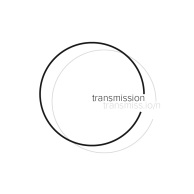A brief history of women in astronomy
Like many fields of science, the number of female astronomers is depressingly small. Their impact, however, has been considerable. Transmission Podcast regular Beth Biller tells us about her experience as an astronomer and her female astronomy heroes

While today you’ll find women at every level of the astronomical community, they're still wildly underrepresented. The numbers vary from country to country – Argentina, for instance, has a relatively healthy 40:60 split, but statistics from the International Astronomical Union estimates the world average of women astronomers to be just shy of 16%. (Depressingly, we fall short of this small average here in the UK – our percentage of female astronomers is around 13.)
Beth Biller is one of the 16%, an observational astronomer at the University of Edinburgh and regular contributor to Transmission Podcast. She’s been a space-nut from an early age – “I was that odd six year old who would regale you in detail about Venus's sulphuric acid clouds or about black holes,” Biller tells us – and while she’s never experienced any overt gender discrimination in her career, she does recognise that there does still seem to be an invisible barrier for some young women to pursue astronomy as a profession.
“I did the very stereotypical thing of drifting away from those interests in my early teens,” she recalls. “It wasn't that I actually had lost interest in the subject – it's more that I was concerned that I wasn't ‘good enough’ at maths or science to pursue a career in it, and that almost made me too scared to try. Now, after having been in the field for nearly 20 years and clearly successful at it, I really wonder where I got that idea from. I do think it was somewhat from my own (and others') internalised stereotypes of who is and isn't a scientist.”
Perhaps these “internalised stereotypes” still exist because the female astronomers who have contributed greatly to our understanding of the cosmos haven’t been fully recognised and celebrated. Most agree Hypatia of Alexandria, who was born in Alexandria, Egypt, circa 350 AD, to be the world’s first female astronomer. Unfortunately, the most we know about this pioneer is her brutal death. She was murdered in 415 AD on her way home from delivering her daily lectures at the University of Alexandria by a Christian mob who believed her to be a witch.
We ask Biller to name her own personal astronomy heroes and she points to the female "computers" who made some pretty impressive discoveries from behind the scenes. Long before laptop computers or the analogue computers the size of houses that were used in the space race, much of the vital groundwork and complex equations that allowed our first forays into space were worked out by hand by people known as “computers”. Most of them were women and many of them women of colour.
One such computer was Katherine Johnson, who calculated trajectories for Project Mercury and Apollo 11 in the 1960s and was recently the subject of Oscar nominated drama Hidden Figures. Human computers go back much longer than the space race, it turns out. “50 years before that, many of the advances in our understanding of stars and in particular stellar classification were made by women working as computers at Harvard College Observatory (such as Annie Jump Cannon, Henrietta Swan Leavitt and Antonia Maury, amongst others).” Biller also points to British-American astronomer Cecilia Payne-Gaposchkin as a personal hero: “She showed in her [1925] PhD thesis that stars were composed mainly of hydrogen and helium – what has later been described as 'undoubtedly the most brilliant Ph.D. thesis ever written in astronomy.'”
The list could go on. Caroline Herschel (1750-1848), the German astronomer who discovered eight comets over eleven years. Annie Jump Cannon (1863–1941), the American astronomer whose cataloguing work was instrumental in the development of contemporary stellar classification. Henrietta Swan Leavitt (1868-1921), who discovered the first accurate method for measuring great distances in space. And the great Sally Ride (1951-2012), a trained astrophysicist who, in 1983, became the first American woman in space. Maybe if these names were as familiar as Galileo, Copernicus and Hubble, the ratio of female:male astronomers worldwide would be closer to 50:50.
Listen to Transmission, a podcast that speculates on what would happen if we suddenly knew we were no longer alone in the universe, at www.transmiss.io/n/podcast